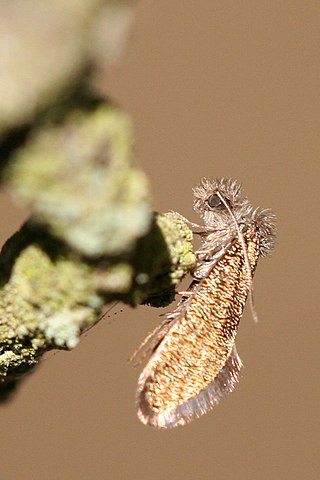
Dyseriocrania subpurpurella is a diurnal moth from the family Eriocraniidae, found in most of Europe. The moth was first named by the English entomologist, Adrian Hardy Haworth in 1828.

Coleophora lutipennella is a moth of the family Coleophoridae. It is found in most of Europe, except the Mediterranean islands.
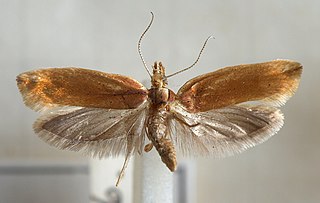
Ypsolopha ustella, the variable ypsolopha moth, is a moth of the family Ypsolophidae. It is found in most of Europe and is also present in North America.

Bucculatrix frangutella is a moth of the family Bucculatricidae. It was described by Johann August Ephraim Goeze in 1783. It is found in Europe.

Bucculatrix cidarella is a moth of the family Bucculatricidae. It is found in most of Europe, Kazakhstan and Japan (Honshu). It was described in 1839 by Philipp Christoph Zeller.

Bucculatrix cristatella is a species of moth of the family Bucculatricidae. It is found in most of Europe. It was described in 1839 by Philipp Christoph Zeller.
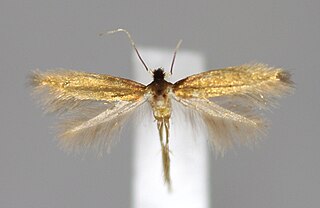
Bucculatrix nigricomella is a species of moth of the family Bucculatricidae. It was first described in 1839 by Philipp Christoph Zeller. It is found in most of Europe.
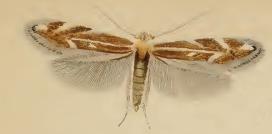
Bucculatrix maritima is a species of moth of the family Bucculatricidae. It is found in most of Europe, Russia and Japan. It was first described in 1851 by Henry Tibbats Stainton.

Phyllonorycter quercifoliella is a moth of the family Gracillariidae. It is known from all of Europe, except for the Mediterranean islands.

Phyllonorycter salictella is a moth of the family Gracillariidae. It is known from all of Europe, east to Russia and Japan.

Phyllonorycter spinicolella, also known as the sloe midget, is a moth of the family Gracillariidae, first described by the German entomologist Philipp Christoph Zeller in 1846. It is probably present in all of Europe.

Phyllocnistis unipunctella is a moth of the family Gracillariidae. It is known from all of Europe.
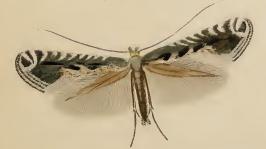
Parornix torquillella is a moth of the family Gracillariidae found in Europe. The larvae mine the leaves of Prunus species, such as blackthorn. It was described by the German entomologist Philipp Christoph Zeller in 1850, from specimens found in Florence, Leghorn and Pisa.

Agonopterix conterminella is a moth of the family Depressariidae which is found in Asia, Europe and North America. It was described by Philipp Christoph Zeller in 1839 from a specimen found in Augsburg, Germany. The larvae feed on the terminal shoots of willows.

Agonopterix pallorella is a moth of the family Depressariidae. It is found in most of Europe.

Bucculatrix bechsteinella is a moth of the family Bucculatricidae. It was described by Johann Matthäus Bechstein and Georg Ludwig Scharfenberg in 1805. It is found in most of Europe, except Greece and Bulgaria.

Bucculatrix demaryella is a moth of the family Bucculatricidae. The species was first described by Philogène Auguste Joseph Duponchel in 1840. It is found in most of Europe, Russia and Japan.
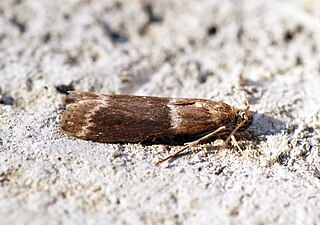
Cryptoblabes bistriga is a species of snout moth in the genus Cryptoblabes. It was described by Adrian Hardy Haworth in 1811. It is found in most of Europe, except Portugal, parts of the Balkan Peninsula and Ukraine.

Digitivalva pulicariae is a moth of the family Acrolepiidae. It is found in most of Europe, except Portugal, Fennoscandia, the Baltic region and Poland.

Orthotelia is a genus of moths in the subfamily Orthoteliinae.Orthotelia sparganella, a moth of the family Glyphipterigidae, is its only species.


















